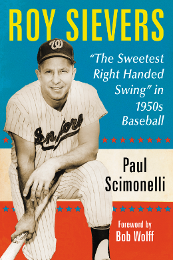By Marty Niland
It’s fun to be a Nationals fan right now. The team is winning on its final road trip of a record-setting offensive season. It has locked up home-field advantage in the National League Division Series, and Bryce Harper is most likely  headed back into action for the final week of the regular season.
headed back into action for the final week of the regular season.
That’s all great news for fans who feel like their luck runs out in late September and early October, even in the best of years. In the final weeks of the 2016 season, pitcher Stephen Strasburg and catcher Wilson Ramos were lost to season-ending injuries, and the Nats went on to lose the National League Division Series to the Los Angeles Dodgers. In 2014, an injury to Ryan Zimmerman lingered into the postseason, and the Nationals offense largely disappeared in an NLDS loss to San Francisco. In 2012, of course, the glory of Jayson Werth’s Game-Four-winning homer against St. Louis in the NLDS was followed by the horror of the bullpen meltdown in a Game Five loss.
This year, it’s the defending World Series champion Chicago Cubs who will come calling in October. And unlike years past, the Nats do not have a major issue casting a potential cloud over the postseason. In fact, here are three reasons the Nats should prevail against the Cubs and play for the National League pennant.
- The starting rotation: There might be some argument from the Dodgers, but from this perspective, the Nats have the deepest rotation in the postseason. Max Scherzer has the second-best ERA in NL at 2.55, followed by a rejuvenated Gio Gonzalez and a healthy Strasburg, at 2.68, tied for third. The Cubs have just one in the top 10, Jake Arrieta at No. 6 with a 3.43 mark.
If the Nats need a fourth starter, there’s Tanner Roark, whose 4.41 ERA was inflated by a rough first half of the season, but has pitched to a 3.24 mark since the All-Star break and a 3.13 mark in September.
- The bullpen: It’s taken time and a couple crafty trades, but the Nats finally have the elite bullpen they promised us in the spring. All three of the relievers general manager Mike Rizzo traded for, Brandon Kitnzler (2.31), closer Sean Doolittle (1.93), and setup man Ryan Madson (1.45) have ERAs below 3, and Matt Albers, consistent all season, is at 1.69. Doolittle is perfect in 20 save situations, and each of the other three has recorded a save for the Nats this season.
And as Rizzo predicted, the other relievers have settled into regular roles nicely. Matt Grace has settled in as a long reliever with a .118 opponents’ batting average and a 1.80 ERA this month. Sammy Solis has not allowed an earned run in 6 2-3 September innings, and neither has Enny Romero in 5 1-3, making them top contenders for the LOOGY (lefty one-out guy) role.
- The bench: This has been the Nats main shortcoming in previous postseasons, but it could turn out to be their secret weapon this year. Adam Lind (.310/.369/.527) is an everyday player on just about any other team, but on the Nats, he’s the pinch-hitter of choice when the team needs a big hit, and he usually comes through. Howie Kendrick (.297/.349/.484) is also a legitimate starter on most other teams. Wilmer Difo (.276/.325/.378, 9-for-10 on steal attempts) is a rally starter who has turned into a major league caliber infielder before our very eyes.
The bench will almost certainly include rookie Victor Robles as well. His batting numbers are based on a small sample size, but he has made something good happen every time he has stepped on the field. Robles has four big league hits; two of them are triples, and he’d have a third if he hadn’t over slid the bag. Even on a day when he went 0-for-4 at the plate, he robbed Jose Reyes of extra bases with a leaping catch against the right field fence. Then, after battling the sun in right field for a running catch, he threw out Phillip Evans ranging from first base for double play to end the seventh.
It’s true that anything can happen in the postseason. Mistakes are magnified, role players turn into heroes and players have breakout performances. However, this is the deepest, most pitching-rich Nationals team to advance to the postseason. It is also a team that’s overdue for the same breaks that their opponents have gotten in years past.
Once the Nats have the NLDS monkey off their backs, there’s no telling how far they can go.






